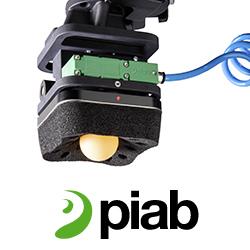Freescale Adds Controller and Peripheral Modules and Full Kits to Tower System Development Platform
Fifteen additions to modular tool lineup, including modules featuring Kinetis and ColdFire+ microcontrollers, support rapid prototyping and help reduce time to market
Freescale Semiconductor (NYSE: FSL) continues to extend the Tower System development platform with new, feature-rich development boards (modules) for medical, industrial and general embedded applications. Today, Freescale announced eight new controller modules, three interchangeable peripheral modules and four comprehensive kits for the reconfigurable Tower System. In addition, the Tower System was awarded the 21st Annual EDN Innovation Award in the Development Kits, Reference Designs and Single-Board Computers category earlier this year.
The new controller modules feature Kinetis microcontrollers (90 nanometer, 32-bit MCUs based on the ARM® Cortex-M4 core) and ColdFire+ Jx and Qx MCUs. Three new peripheral modules add fast network connectivity for wireless control and monitoring, a low-power audio interface and low-power 802.11 Wi-Fi for home wireless applications.
The Freescale Tower System provides designers with a customizable embedded design environment that offers mix-and-match tool selections to suit their design needs. Interchangeable, easy-to-use modules promote the reuse of hardware from across designs and architectures, helping to speed time to market and scale down overall tool costs.
Advanced MCU modules
The following development boards are available individually for standalone debug or as part of a comprehensive Tower System kit:
The Universal 8-bit Tower Controller Module, TWR-S08UNIV, includes a controller module with a set of MCU daughter cards featuring Freescale's popular S08 and RS08 MCUs, including the RS08KA and S08AC, QD, QE, QG and SH families. This module can be used as a stand-alone development system or it can be paired with one or more peripheral modules from the growing Tower System ecosystem. This combination of the Tower System module and attachable daughter cards provides an easy way to switch between S08 and RS08 MCUs without duplicating development board purchases. It also gives the Tower System ecosystem access to a set of MCUs previously supported only by traditional demo boards.
The TWR-MCF51JF and TWR-MCF51QM controller modules are based on the ColdFire+ MCF51JF128 and MCF51QM128 MCUs respectively. As with most Tower System controller modules, they each can operate standalone or as part of a Tower System. Both feature an on-board open-source debug interface, capacitive touch pads, audio capture and playback, and a general purpose Tower plug-in (TWRPI) socket. Additionally, the MCF51JF includes a full-speed USB 2.0 dual-role interface and the MCF51QM provides easy access to high-precision analog IO.
The TWR-K53N512 controller module features a MCU from the new Kinetis K50 family, the MK53N512CMD100. The Kinetis K50 MCU family adds an analog measurement engine consisting of integrated operational and transimpedance amplifiers and high-precision analog-to-digital converter (ADC) and digital-to-analog converter (DAC) modules. The TWR-K53N512 provides the features that have become common to Tower controller modules, such as on-board debug interface, capacitive touch, accelerometer, TWRPI socket, etc., and it adds an expansion connector that provides easy access to the analog measurement engine. The module also comes with the TWRPI-SLCD module featuring a segment LCD. The module connects to the TWRPI-SLCD board and has Ethernet, USB connectivity for compatibility with the TWR-SER and a MMA7660 accelerometer.
Freescale's Robot Kit (FSLBOT) is an easy-to-use mechatronics development and demonstration platform that allows students, hobbyists and developers to experiment with mechanics, electronics and software all in one integrated system.
Featured Product

